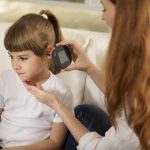 Telehealth is a subject I’ve written about a lot in recent years, with startups such as Babylon and Vida leading the way in their delivery, whilst Medigo have attempted to use telehealth to provide top notch healthcare to those in third world countries.
Telehealth is a subject I’ve written about a lot in recent years, with startups such as Babylon and Vida leading the way in their delivery, whilst Medigo have attempted to use telehealth to provide top notch healthcare to those in third world countries.
Inside the NHS, the rollout of telehealth has largely been confined to trials in places like Airedale NHS trust, which installed a telehealth system in a care home for the elderly, thus providing residents with 24/7 care.
When the system was tested out, it saw a 35% reduction in emergency admissions and a 53% drop in A&E attendance.
These gains were reflected in a study conducted by a team from UC Davis, which explored the cost savings possible with telehealth. It reveals that such savings are particularly pronounced in rural areas that use telemedicine to connect up emergency departments with doctors at much larger hospitals. It suggests that even once the costs of installation and maintenance are considered, the savings work out at around $4,662 per use on average.
“Our previous work showed that telemedicine was good for kids, families, and providers, but we didn’t really address the cost issue,” the authors say. “Now we know, not only does it improve quality, safety, and satisfaction, but it also saves money.”
Telehealth 2.0
As telemedicine has become more well established, it’s been fascinating to observe some of the innovative ways the concept has been expanded. For instance, Tyto Care augment their standard telehealth platform with a range of devices to allow the user to perform a range of tests and examinations themselves.
These tools allow the user to examine the ears, throat, skin, heart, lungs, and temperature themselves, thus bridging a significant gap in the telehealth offering. Traditionally, platforms were severely limited as clinicians could not perform diagnostic examinations of the patient remotely, which restricted the range of consultations they could perform.
“For the first time we are making it possible to closely replicate, from home, a face-to-face visit to the doctor’s office,” Dedi Gilad, CEO and Co-Founder of Tyto Care, says. “Tyto is providing the missing link that will help telehealth realize its full potential.”
The equipment is designed to be usable either during a live consultation or beforehand, with the data then sharable with the clinician in real-time.
In a study conducted in Israel, compared users of TytoCare with those receiving more traditional examinations, and the results suggest the platform has clear merit.
“The results are clear— examination findings achieved with TytoCare are on par with those reached by conventional examination tools,” stated Professor Waisman, MD, Director of Emergency Medicine at Schneider Children’s Medical Center. “Beyond that, the quality of the readings as well as the overall user experience received positive ratings from physicians, a great testament to the solution’s promise to provide accurate and confident diagnoses via telehealth technology.”
As with many telehealth platforms, Tyto Care comes with a comprehensive range of AI grunt behind it, both to help ensure the devices are used correctly, but also to monitor the readings from them to ensure accuracy.
The company secured FDA approval earlier this year, and launched officially in the US at the same time. The ultimate goal is to have the service available in every household, but in the short-term, it’s mostly being sold as a B2B product.
Challenges to overcome
Of course, for telehealth to continue its march will require a shift in behavior, from both patient and doctor alike. This may be a sizeable challenge, at least according to a recent paper from researchers from the Universities of Bristol, Oxford, Edinburgh and Exeter.
The study, which the authors claim is the first of its kind on the UK, set out to examine the extent to which general practices teams in the UK were taking advantage of new platforms to offer their services, either now or in the future.
Over 400 practices were chosen, with a combination or urban and rural, deprived and affluent locations selected to try and provide a good cross-section of the country.
“We found that, despite the majority of practices offering telephone consultations on a frequent basis (66 per cent), fewer were implementing email consultations (6 per cent) and none were currently using internet video. In addition, the majority do not plan to implement these methods in the future,” the authors say.
Tyto Care is a nice example of how the technology is evolving to try and meet the needs of patient and clinician alike. Check out the video below to see the platform in action.
https://www.youtube.com/watch?v=tCajVa263Ks